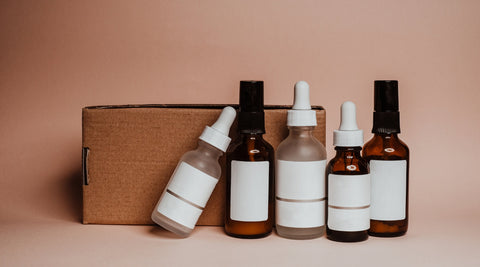Dark spots. Uneven tone. Melasma. “Pigmentation” has become a catch-all term in beauty conversations, and it’s one of the most common reasons people visit dermatologists in India. But what exactly causes pigmentation, and what can you realistically do about it? Let’s break it down.
What Is Pigmentation?
Pigmentation refers to the color of your skin, determined mainly by a pigment called melanin. Produced by specialized skin cells (melanocytes), melanin acts like a natural sunscreen: it absorbs UV radiation and protects DNA from damage.
Sometimes, though, the process goes into overdrive, leading to patches of darker skin. This is what we commonly call “hyperpigmentation.”
Types of Pigmentation
Not all pigmentation is the same. Understanding the type helps in choosing the right treatment.
-
Post-inflammatory hyperpigmentation (PIH): Dark spots left behind after acne, eczema, cuts, or burns.
-
Melasma: Symmetrical brown or gray patches, often on the cheeks, forehead, or upper lip. Hormones, sun exposure, and genetics play a role.
-
Sunspots / Lentigines: Small dark spots caused by cumulative UV exposure over the years.
-
Freckles: Genetically driven, but also darken with sun exposure.
Why Does Pigmentation Happen?
Pigmentation isn’t caused by just one thing, it’s usually a combination of internal and external triggers.
-
UV radiation: The number one driver. Even incidental sun exposure (like a quick walk) can worsen spots.
-
Hormones: Estrogen and progesterone fluctuations can trigger melasma (e.g., during pregnancy or with contraceptive use).
-
Inflammation: Any injury or irritation - acne, eczema, even aggressive skin treatments - can leave behind dark marks.
-
Pollution & oxidative stress: Free radicals from the environment can overstimulate melanin production.
-
Genetics & skin tone: Darker skin types (Fitzpatrick IV–VI) are more prone to PIH due to higher baseline melanin activity.
Common Myths About Pigmentation
-
“One cream will erase dark spots forever.”
Pigmentation is chronic and relapsing. It can be improved, but rarely “cured” with a magic topical. -
“Natural remedies like lemon juice or turmeric are safe and effective.”
Many DIY hacks can actually irritate the skin and worsen pigmentation. -
“Sunscreen isn’t necessary indoors.”
UVA rays penetrate windows, and visible light also plays a role in pigmentation.
Evidence-Based Approaches
1. Sun Protection Is Non-Negotiable
Broad-spectrum sunscreen (SPF 30 or higher) is the single most important step. Physical blockers like zinc oxide and iron oxides also help against visible light, which contributes to pigmentation in darker skin tones.
2. Topical Treatments
-
Hydroquinone (prescription): gold standard for melasma/PIH.
-
Retinoids: increase cell turnover, reduce pigment clumping.
-
Vitamin C: antioxidant that interferes with melanin production.
-
Niacinamide: reduces transfer of melanin to skin cells.
-
Tranexamic acid: newer option, effective for melasma both topically and orally.
3. Procedures (Dermatologist-Supervised)
-
Chemical peels (glycolic, salicylic, TCA).
-
Lasers and IPL (but risk of rebound pigmentation in darker skin types, so must be cautious).
-
Microneedling with actives (to enhance penetration).
4. Oral / Supplement Support
There’s growing evidence that certain oral ingredients can support pigmentation management:
-
Polypodium leucotomos extract (PLE): a fern extract with photoprotective properties.
-
Colorless carotenoids (phytoene, phytofluene from pearl tomato): absorb UV, reduce oxidative stress, and may reduce pigmentation.
-
Glutathione: antioxidant, though data is mixed and results are variable.
-
Antioxidants like Vitamin E & C: support overall skin defense.
Why Pigmentation Is Hard to Treat
Pigmentation is multifactorial and chronic. Even when treatments work, recurrence is common because the underlying triggers (sunlight, hormones, inflammation) can’t be fully eliminated. That’s why dermatologists emphasize long-term management, not quick fixes.
The Bottom Line
Pigmentation isn’t just a cosmetic concern - it reflects how your skin responds to stress, hormones, and the environment. The most effective strategies combine prevention (sunscreen, gentle care) with targeted treatments guided by evidence.
There’s no magic cure, but with consistency and the right approach, pigmentation can be managed and improved, helping skin look healthier, more even, and more resilient over time.
References
-
Ortonne J-P. Pigmentation disorders. Br J Dermatol. 2010;162(1):1–14.
-
Grimes PE. Management of hyperpigmentation in darker racial ethnic groups. Semin Cutan Med Surg. 2009;28(2):77–85.
-
Kang HY, Ortonne JP. Melasma update. Acta Derm Venereol. 2010;90(5):429–433.
-
Leyden JJ, et al. Oral Polypodium leucotomos extract in photoprotection. J Am Acad Dermatol. 2008;58(5):AB15.
-
Grether-Beck S, et al. Phytoene and phytofluene in human skin: photoprotective carotenoids. J Nutr. 2017;147(11):1979–1986.
-
Watanabe F, et al. Glutathione as a skin-lightening agent: randomized controlled trial. Clin Cosmet Investig Dermatol. 2014;7:267–273.



